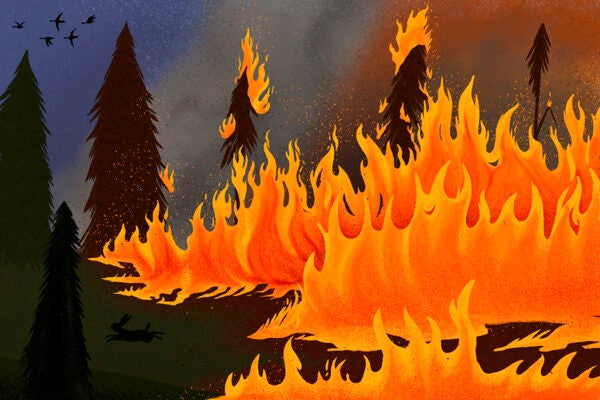Species’ extinctions are as old as life on earth. Some of the first creatures that went extinct millions of years ago, were the anaerobic bacteria that died en mass after our planet’s atmosphere became saturated with oxygen as a result of the Great Earth Oxidation Event. It was essentially a bacterial genocide—the oxidation that suffocated the anaerobic organisms was caused by cyanobacteria, which secretes oxygen as a waste product. Since then, the world has lived through five great mass extinctions, and the science community notes that we are currently living through the sixth. There’s hardly a week when you don’t hear about yet another species being threatened or vanishing entirely. This past week was no exception—in just a few days, science explored the causes that decimated animals and humans alike, from Ice Age to Internet Age.
Trundling toward extinction (Scientific American)
When glaciers receded from the North American midcontinent about 14,000 years ago, mastodons, the distant relatives of modern day elephants, thrived in the vast expansive forests—until they disappeared suddenly and mysteriously, leaving modern-day scientists with a puzzle to solve. New research ponders a surprising and counterintuitive culprit: the absence of large predators.
According to the found fossils, mastodons roamed the North American continent from Ontario to Mexico, doing quite well until their population suffered a rapid collapse. In the past, scientists pondered several extinction theories—from climate change to human hunting to supernova explosions. But the new predator hypothesis makes sense. Paleontologists found few fossilized remains of large carnivores from the mastodon era in the American Midwest—such as short-faced bears and sabercats. Without large carnivores mastodon population may have boomed, eventually exhausting the ecosystem’s resources—and then crumpled quickly because of mass die offs.
Stitching together forests can help save species (The New York Times)
As humans pave roads and clear farmland, the world’s forests and the animal dwellers they harbor are becoming increasingly more fragmented. When a species is sequestered in a small region, unable to fine mates from other locales, it faces much higher chances of going extinct. Scientists find evidence that “stitching” forest fragments together by planting corridors between them can prevent wildlife from disappearing.
Past studies noted that corridors help maintain connectivity among no longer contiguous patches of wilderness, giving animals the ability to travel, migrate, meet mates, or relocate in case of natural disasters. Animals aren’t the only ones that need continuous habitats to stay well—from Amazonian beetles to Brazilian ferns, species dwindle and collapse when disconnected. To fulfill their mission, the corridors must meet the requirements of all hosted life forms, which fall into two distinct groups: the passage species and the dweller species. Large herbivores and medium to large carnivores fall into the first category, passing through relatively quickly—as part of seasonal migration, to find mates or to give birth. Small mammals, amphibians, reptiles, birds, insects, and plants constitute the second group, residing in the corridors for longer time spans. That means that the corridors must provide what’s needed for dwellers’ survival—for example water for the amphibians and soil for the plants.
Did climate change bring down late Bronze Age civilizations? (Hakai Magazine)
In the Gulf of Corinth in Greece, scientists are fishing for clues to why ancient Mediterranean empires vanished here 3,000 years ago. As divers drill 4,5-meter holes in the ocean floor, they’re finding sunken ancient beaches and a burial site that may have been part of a coastal village. The extinction causes are harder to identify. Some historians blame droughts and famines, some blame wars, and others cite earthquakes.
Science doesn’t have a clear answer to what caused the collapse of the ancient Mediterranean societies, but there are different perspectives. The first faults the changing weather while the second believes that complex societies tend to overuse and degrade their landscapes, essentially committing “ecocides.” The third viewpoint blends both ideas, adopting the concept that natural catastrophes are unavoidable and may result in declines, deaths, and extinctions.
Thomas Levy, an anthropologist at the University of California, San Diego, and one of the leaders of the Mediterranean quest, hopes that his team’s diving and drilling will unearth the much-needed clues to the Bronze Age civilizations’ decay. “My impression is that it will be multicausal,” he told Hakai Magazine. “Let’s open the cores and see what they tell us.”







